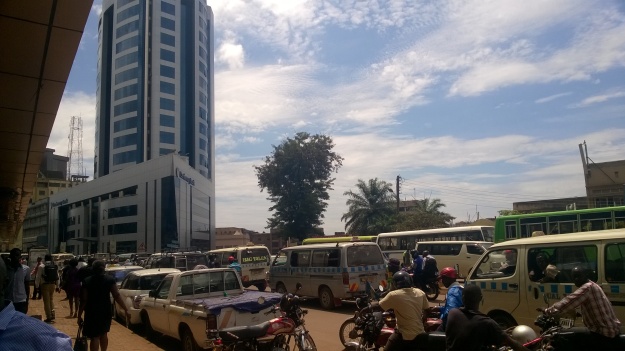Mark Borchers from SEA writes on the recent context of SAMSET work in the wider space of urban and rural energy access in the developing world.
Christoph Frei, Secretary General of the World Energy Council[1] recently noted that “only three years ago, when suggesting to energy professionals that there could be ‘leap frogging’ in energy similar to what has happened in the mobile phone industry, the response would have suggested little understanding of energy realities. We now see tens of thousands of direct household solutions being delivered to rural Africa without a formal supply chain and in the absence of any energy infrastructure backbone. What does leapfrogging mean, if not this?”
…and…
“In many rural contexts in Africa, renewables are providing an engine for local development and poverty reduction. Of the two-thirds of people in Africa without access to power, 80% live outside urban centres. A mix of off-grid renewable power instalments could be the key to electrifying rural Africa with consumers buying power locally and paying via their mobile phone.”
The potential of energy delivery modes “without a formal supply chain and in the absence of any energy infrastructure backbone” that Frei speaks of is indeed exciting. This largely bypasses the cumbersome processes of central institutions with their inefficiencies and mixed agendas.
He also notes: “For the energy sector, unprecedented speed of change and new realities pose a wide range of challenges and new opportunities for companies and governments who are on a high-stakes journey to adapt their business models and policy frameworks.”
Energy leapfrogging does not only apply to rural areas, direct benefits to the local economy can be seen in large cities such as Kampala, above. Image: Daniel Kerr
Frei importantly reinforces the perception that the energy sector is changing rapidly, and that the old way of doing things – where centralized planning and large utilities are the key players – needs revisiting, as it is unlikely to be the way of the future. Yet most national governments and utilities in Sub-Saharan Africa seem to be moving into the future as if this is not the case, with the potential for stranded assets and business failure. Surely new approaches and business models need to be explored more urgently.
Secondly, Frei emphasizes rural energy access in Africa. This rural focus is clearly important, and it suits national governments whose political support is generally rural-based (opposition movements tend to grow from urban areas). But this traditional focus on rural access can unduly overshadow the importance of urban energy access. Looking at access to electricity, although most unelectrified households are currently rural (around 550 million people are unelectrified), urban electrification rates are not high – often well below 50% – and currently around 150 million urban dwellers have no access to electricity[2]. Between 2035 and 2040 Africa’s population is expected to become predominately urban[3]. Modelling undertaken by Sustainable Energy Africa as part of the SAMSET project[4] indicates that the future energy demand of Sub-Saharan Africa is likely to be substantially urban, with the urban share of total demand rising to over 75% by 2040 (see Figure). We should not overlook that there are huge opportunities to boost access to modern energy in urban areas. It is in urban areas that populations are closer to infrastructure, more dense, with higher average incomes and where delivery systems can be more cost-effective. It is in urban areas also where the very poor can be the most destitute, with reduced access even to traditional biomass energy. It seems justifiable to encourage a parallel focus on rural and urban access in a sector where ‘access’ currently seems almost entirely synonymous with ‘rural access’.
Figure: Urban sub-Saharan energy demand over time showing Business-as-Usual, Universal Access and Energy Efficiency scenarios. Total sub-Saharan Africa energy demand (urban and rural) is also shown (Source: Modelling the Urban Energy Future of Sub-Saharan Africa, Sustainable Energy Africa, 2015).
One more point worth considering regarding the urban-rural population dynamic: At a recent course SAMSET was running for municipal officials and urban energy practitioners, a lecturer asked “how many of you are first generation urban, or still consider your ‘home’ to be in a rural area?”. The majority raised their hand. There may be various implications of this characteristic: urban-rural remittances are likely to remain common into the medium-term, which could facilitate rural energy access with small decentralized technologies such as PV being funded from urban earners for their rural homes and families. On the other hand remittances may reduce investment in urban areas, which may impact to some extent on urban economies and possibly also the willingness to invest in urban energy infrastructure. Let’s keep an eye on how this dynamic plays itself out over the coming years.
[1] World Energy Council Secretary General reflects on key highlights of 2016. Africa Energy Indaba Press Release, 12 January 2017
[2] Calculation from IEA’s African Energy Outlook 2014 electrification database.
[3] African Urban Futures 2016, Bello-Schünemann and Aucoin; State of African Cities 2014, UN Habitat
[4] Modelling the Urban Energy Future of Sub-Saharan Africa, Sustainable Energy Africa, 2015. www.africancityenergy.org



